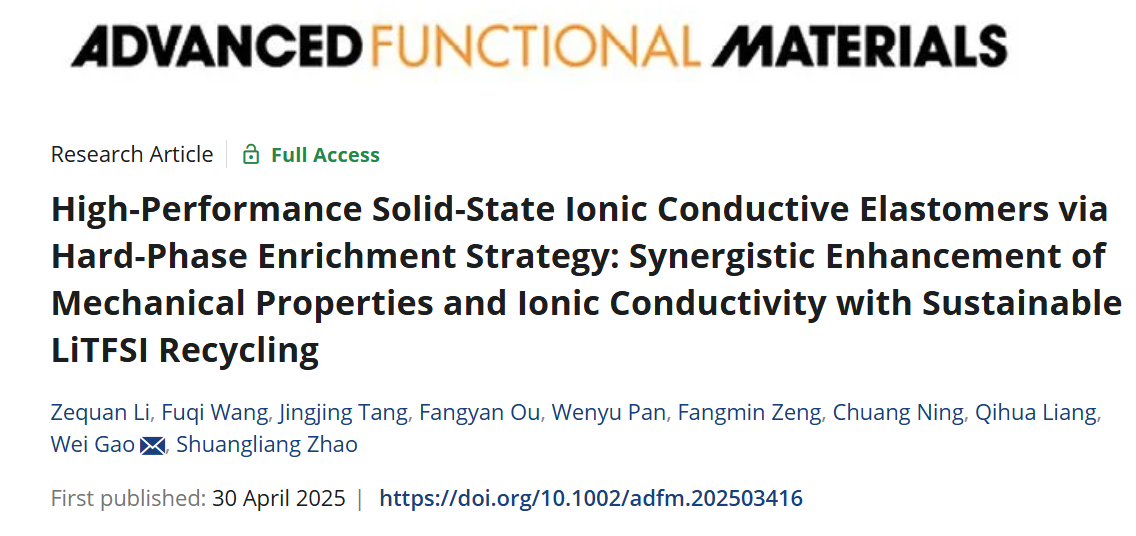Recently, the team of Structural Thermodynamics and Micro/Nano Chemical Engineering of Guangxi University has made significant progress in the research of solid-state ionic conductive elastomers. The research findings were published in the internationally renowned journal Advanced Functional Materials under the title "High-Performance Solid-State Ionic Conductive Elastomers via Hard-Phase Enrichment Strategy: Synergistic Enhancement of Mechanical Properties and Ionic Conductivity with Sustainable LiTFSI Recycling." The first author of the paper is Assistant Professor Li Zequan from the School of Resources, Environment and Materials, and the corresponding author is Associate Professor Gao Wei from the same school. Guangxi University is the sole corresponding institution.

Solid-state ionic conductive elastomers (SICEs) effectively overcome the issues of evaporation and leakage commonly associated with gel-type ionic conductors. However, a major challenge in this field lies in balancing high ionic conductivity with mechanical robustness. To tackle this issue, the research team proposed a hard-phase enrichment strategy for fabricating SICEs, which successfully achieves both high ionic conductivity and excellent mechanical properties, thereby resolving the long-standing trade-off between these two performance indicators. Using this strategy, the team developed a solid-state ionic conductive elastomer, designated as TCICE-120, which exhibits a mechanical strength of 3.5 MPa and an ionic conductivity of 4.9 × 10⁻⁴ S·cm⁻¹ at 25 °C. In addition, to mitigate the high cost and environmental impact of bis(trifluoromethanesulfonyl)imide lithium (LiTFSI), a simple and efficient water-based recycling strategy was implemented to recover LiTFSI from the elastomer, achieving a high recovery rate.
The Structural Thermodynamics and Micro/Nano Chemical Engineering team is known for its focus on cutting-edge interdisciplinary research, integrating strengths from multiple fields including materials science, wood science and technology, and chemical engineering. The team has achieved a series of innovative breakthroughs in the regulation of structural thermodynamics and the optimization of micro/nano chemical engineering processes. Notably, this marks the third research paper published by the team in Advanced Functional Materials in 2025.